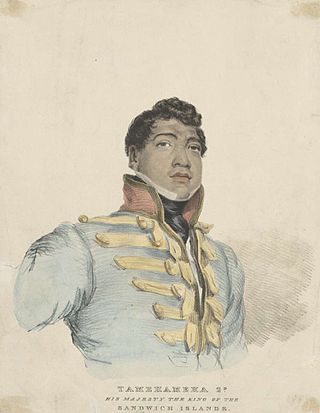
Kamehameha II was the second king of the Kingdom of Hawaii from 1819 to 1824. His birth name was Liholiho and full name was Kalaninui kua Liholiho i ke kapu ʻIolani. It was lengthened to Kalani Kaleiʻaimoku o Kaiwikapu o Laʻamea i Kauikawekiu Ahilapalapa Kealiʻi Kauinamoku o Kahekili Kalaninui i Mamao ʻIolani i Ka Liholiho when he took the throne.

Lunalilo was the sixth monarch of the Kingdom of Hawaii from his election on January 8, 1873, until his death a year later.
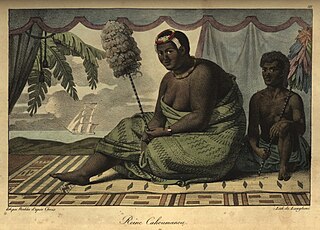
Kaʻahumanu was queen consort and acted as regent of the Kingdom of Hawaiʻi as Kuhina Nui. She was the favorite wife of King Kamehameha I and also the most politically powerful, and continued to wield considerable power as co-ruler in the kingdom during reigns of his first two successors.

Kamehameha III was the third king of the Kingdom of Hawaii from 1825 to 1854. His full Hawaiian name was Keaweaweʻula Kīwalaʻō Kauikeaouli Kaleiopapa and then lengthened to Keaweaweʻula Kīwalaʻō Kauikeaouli Kaleiopapa Kalani Waiakua Kalanikau Iokikilo Kīwalaʻō i ke kapu Kamehameha when he ascended the throne.
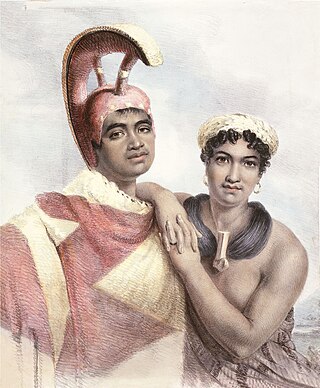
Kuini Liliha was a High Chiefess (aliʻi) and noblewoman who served the Kingdom of Hawaii as royal governor of Oʻahu island. She administered the island from 1829 to 1831 following the death of her husband Boki.

Kalanikauikaʻalaneo Kai Keōpūolani-Ahu-i-Kekai-Makuahine-a-Kama-Kalani-Kau-i-Kealaneo (1778–1823) was a queen consort of Hawaiʻi and the highest ranking wife of King Kamehameha I.

Victoria Kamāmalu Kaʻahumanu IV was Kuhina Nui of Hawaii and its crown princess. Named Wikolia Kamehamalu Keawenui Kaʻahumanu-a-Kekūanaōʻa and also named Kalehelani Kiheahealani, she was mainly referred to as Victoria Kamāmalu or Kaʻahumanu IV, when addressing her as the Kuhina Nui. In her role of Kuhina Nui, she acted as Regent between the death of the King in 1863 until the election of a new King the same year.

Miriam Auhea Kalani Kui Kawakiu o Kekāuluohi Kealiʻiuhiwaihanau o Kalani Makahonua Ahilapalapa Kai Wikapu o Kaleilei a Kalakua also known as Kaʻahumanu III, was Kuhina Nui of the Kingdom of Hawaii, a queen consort of both Kamehameha I and Kamehameha II, and mother of Lunalilo. In ʻŌlelo Hawaiʻi, Kekāuluohi means; "the vigorously growing vine". She adopted her secondary name Auhea, meaning Where, oh where, in memory of the death of Kamehameha I.

Princess Kalani Ahumanu i Kaliko o Iwi Kauhipua o Kīnaʻu, also known as Elizabeth Kīnaʻu was Kuhina Nui of the Kingdom of Hawaiʻi as Kaʻahumanu II, queen regent and dowager queen.

Mataio Kekūanaōʻa, formally referred to as His Honor or His Highness, was a Hawaiian politician who served as governor of the island of Oʻahu, father of two kings, Kamehameha IV and Kamehameha V, and held the office of Kuhina Nui as did his wife, Kīnaʻu and their daughter, Victoria Kamāmalu.

Moses Kekūāiwa was a member of the royal family of the Kingdom of Hawaii.

Kalākua Kaheiheimālie, later known as Hoapili Wahine was a member of Hawaiian royalty who was one of the queen consorts at the founding of the Kingdom of Hawaii. She was the mother of another queen consort, and grandmother of two future kings. Some sources call her Kaheiheimaile rather than Kaheiheimālie. "Mālie" means serene while the "maile" is the vine Alyxia olivaeformis. The second spelling seems to be older and more appropriate.
Keʻeaumoku Pāpaʻiahiahi (1736–1804) was a Hawaiian high chief and the father of Kaʻahumanu. He was the principal agent in elevating Kamehameha I to the throne of Hawaiʻi and served in a capacity similar to commander in chief or Prime Minister. He is sometimes referred to as Keʻeaumoku II Pāpaʻiahiahi numbering Keʻeaumoku Nui as the first and his son as the third.
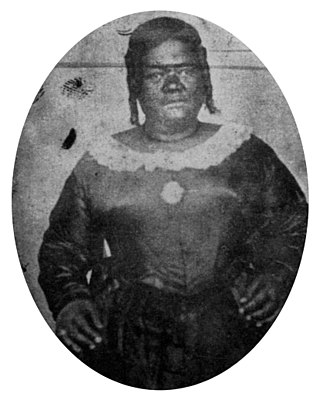
Keahikuni Kekauʻōnohi was a Hawaiian high chiefess who was a member of the House of Kamehameha. She was granddaughter to King Kamehameha I and one of the wives of Kamehameha II. Her Christian name is disputed; it is given as Mikahela in the 1848 Mahele Book and as Miriam in later sources.
William Pitt Leleiohoku I was a Hawaiian noble during the Kingdom of Hawaii who married two notable princesses and served as Royal Governor of Hawaii island.
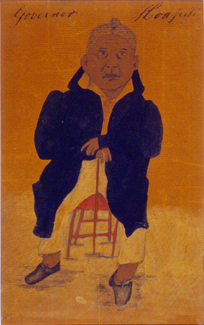
Ulumāheihei Hoapili was a member of the nobility during the formation of the Kingdom of Hawaii. He was a trusted military and political advisor to King Kamehameha I, known as "Kamehameha the Great". Although trusted with one of the last symbolic rites of the Hawaiian religion, he later became a supporter of Christian missionaries.

Kahakuhaʻakoi Wahinepio was a Hawaiian chiefess and member of the royal family during the Kingdom of Hawaiʻi. Wahinepio means captive women in Hawaiian. Sometimes she is called Wahineopiʻo, or an extra ʻokina is added, calling her Kahakuhaʻakoʻi. She was also called Kamoʻonohu. She was considered Kamehameha I's third favorite wife and served as female Governor of Maui, an act unheard of at the time in the western world, but common in Hawaiian history.

Peleuli, formally Peleuli-i-Kekela-o-kalani, was a Queen consort of the Kingdom of Hawaii as a wife of king Kamehameha I.
L'Aigle was launched in France in 1801, 1802, or 1803. The British Royal Navy captured her in 1809. From 1810 to 1817, she was a West Indiaman. From 1817 L'Aigle made four complete voyages as a whaler in the British Southern Whale fishery. On her third whaling voyage, she carried King Kamehameha II of Hawaii and Queen Kamāmalu with a number of their retainers and Hawaiian notables to England. She was lost on 6 March 1830 on her fifth whaling voyage.
Haʻaheo Kaniu or Kaniuʻopiohaʻaheo was a high chiefess (aliʻi) and member of the royal family of the Hawaiian Kingdom. She was also known as Lydia Haʻaheo Kaniu.

















